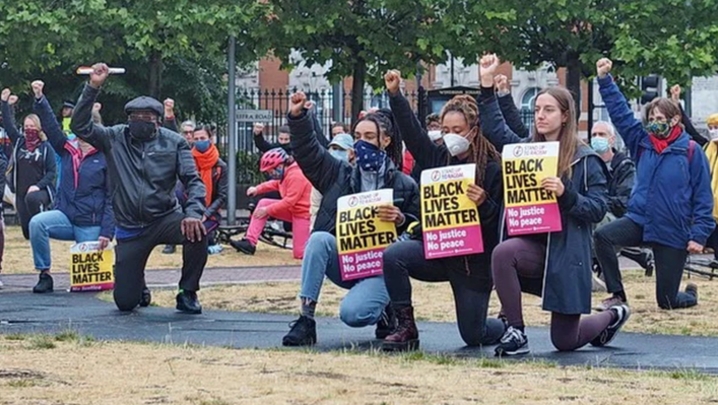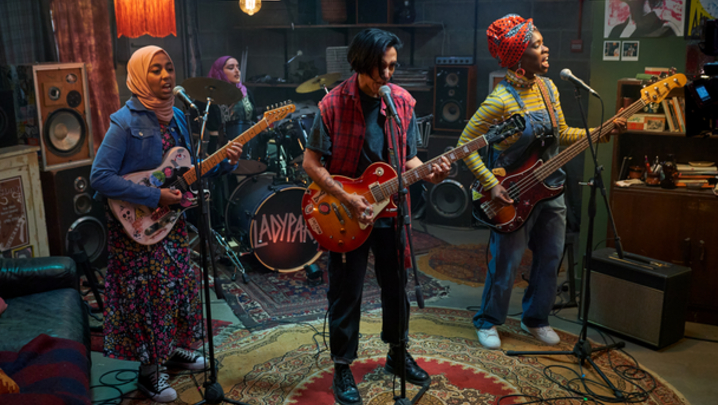An RTS event showed how platforms and broadcasters can cut through digital clutter
It was easier in the old days – if a show was good enough, families in their millions watched it from their living rooms. But as choice, channels and platforms mushroomed, finding an audience for a programme became more complicated. The fight to be heard now requires broadcasters to break out to digital platforms, mobile devices and new audiences – who increasingly receive their recommendations from social media.
An RTS event in July looked at whether TV brands can still cut through and find an audience in today’s cluttered landscape. Yes, said the panel of experts assembled for the event, but only those broadcasters with the best content and strongest brands would prosper.
“It’s a crowded marketplace and highly competitive, and you’ve got to make stuff that people want to watch. I honestly believe that, if you do that, you cut through,” said Zaid Al-Qassab, Channel 4’s chief marketing officer.
“In a world of massive choice, of different platforms and different content, you need brands more than ever,” he said. “That’s how you know what to trust and what to watch.
“It’s all very well with an exciting show that’s already built credibility and you’ve heard of, but, with the plethora of new shows out there, you don’t watch those unless they’re coming from a trusted brand.”
Selma Turajlic, co-founder and COO of digital broadcaster and producer Little Dot Studios, however, stressed the importance of content over brand: “This idea that we are creating brands and destinations just doesn’t cut it any more. What drives engagement and audience attachment is content.
“The fundamentals of how we make and broadcast television are being challenged because of the fragmentation of the audience.”
For traditional broadcasters, she said, the challenge was to keep their “core linear-TV audiences, but also to start to talk to those who are not sitting in front of a TV screen”.
Turajlic added: “We’re all trying to figure out how we get heard, make meaningful connections and make audiences our audiences.”
“I wholly believe in the importance and value of brands,” said Rob Campbell, at the time the executive strategy director for EMEA at advertising and marketing agency R/GA. If he didn’t, as an ad man, Campbell conceded, he would be “fired immediately”.
Campbell argued that “great brands know very clearly who their audiences are and where they’re going”. He conceded that content was “obviously important”, but noted that too many brands “churn any stuff out”. He pointed to Apple: “It has got a lot of money to spend and it is having a hard time right now.”
A platform is more than the sum of its content, Campbell added. A broadcaster needs to understand “what the soul of a brand actually is, its positioning and who it is appealing to”.
“Data has huge value but it also needs an understanding of who you are and where culture is heading. Data gives understanding rather than answers.”
Zaid Al-Qassab identified the Channel 4 brand as one that “champions diversity and unheard voices, that is constantly taking risks. It’s not mainstream and yet tries to produce entertaining, engaging and broadly accessible stuff despite all of that. That’s a hard balance to find and, because we’ve found that balance for decades, people know that’s what we’re for.”
Netflix enjoys a supremely recognised brand and was a recurring subject during the RTS lunchtime discussion. “Netflix, what a nightmare – a global platform, so much money – it has absolute freedom to release stuff in the way that it wants,” said Turajlic.
Campbell said he found it fascinating that everyone looked at Netflix and wanted to be more like Netflix. “That’s literally playing into Netflix’s hands because no one is going to be better than Netflix.… What everyone should be doing is embracing who they really are and what they really stand for.”
Warming to the subject, he added: “When [Netflix] gets something right, you go, ‘Oh, my God, that’s fantastic.’ But there’s a shitload of content there that is just horrific. I could say that about every network in some respects.”
A lot of content, argued Turajlic, was driven by data and algorithms: “It’s not just about making the content, it’s how you get that content seen in an economic landscape that is extremely challenging. Like it or not, you’re forced to understand that data.”
She continued: “In the world of social platforms, you’ve got data coming out of your ears.” But her background in digital television counted for little when it came to making social media content at Little Dot Studios: “[We were] absolutely clueless, [I] had to relearn everything.”
Turajlic maintained, however, that data did not dictate the creativity behind the content, which was based on coming up with “the right idea with that digital DNA that understands the audience we’re trying to talk to”. Data, though, could determine the way that content was edited, its length and scheduling.
All4 had more than 23 million active registered users, revealed Al-Qassab, which the company used to “understand” and “develop better content for” its audience. Data, he said, “is going to become a more important part of the ecosystem”.
Campbell, however, denied that data was a miraculous silver bullet. “It’s a moment of understanding. Ultimately, if you only go with what the data’s told you, you’re basically trying to move forward using the rearview mirror.
“Data has huge value but it also needs an understanding of who you are and where culture is heading. Data gives understanding rather than answers.”
The RTS event featured two audience polls, the first of which asked: “Will channel brands matter in five years?” Almost no one thought brands would disappear, but around 50% of the sample thought that broadcasters’ catch-up brands would be more important than their linear-TV services.
“People are going to decide how to watch [your content] – you don’t get that choice. But you do get a choice in terms of what you’re making,” said Campbell.
“I don’t think many of the channels today will remain successful if they try to be old-fashioned linear brands as linear viewing declines,” said Al-Qassab. “At Channel 4, we’re pretty agnostic about where people consume our content as long as it’s fantastic content that’s on-brand. I think that’s the way forward. As Rob rightly said, ‘You can’t out-Netflix Netflix’.”
A second poll asked how broadcasters were faring with their brands: Disney and the BBC were thought to be doing best; Apple TV+, worst.
The panellists were largely positive about the future of broadcasters. “They’re not stupid,” said Rob Campbell. “[Although] the landscape will change, it doesn’t mean they will disappear. They can play a really valuable role in it.”
“It’s not scary at all [for Channel 4],” said Al-Qassab. “Will it look different? Of course, it will look different. There’ll be some players you haven’t even heard about who do it brilliantly; there’ll be some old guard who don’t learn and change fast enough who go by the wayside. But we are very well positioned as a brand… and, as Rob kindly said, ‘we’re not stupid’.”
Report by Matthew Bell. The RTS event ‘TV brand cut-through re-envisioned: How do you find an audience in an increasingly cluttered video landscape?’ was held on 9 July and chaired by Boyd Hilton, entertainment director of Heat magazine. The producers were David Amodio, Kate Bulkley and Liz Reynolds.




